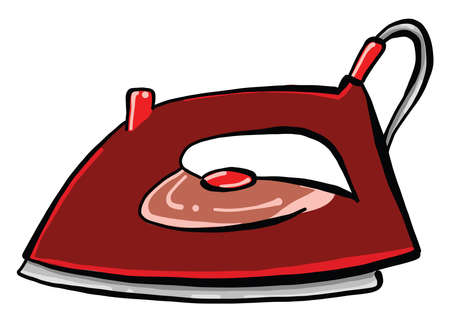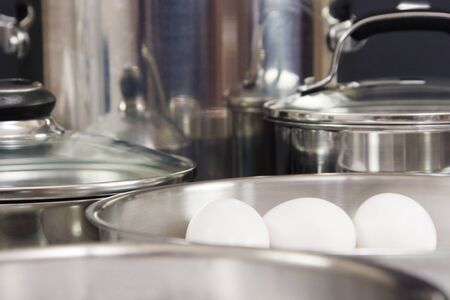Understanding Kitchen Hazards for Pets
If you share your home with curious pups or clever cats, you know they love exploring every nook and cranny—especially in the kitchen! While the kitchen is the heart of a country home, it can also be a danger zone for our furry family members. Let’s take a closer look at common hazards lurking in the kitchen and why it’s so important to spot them early on.
Common Kitchen Dangers for Pets
Some everyday foods and household items that are safe for humans can be toxic—or even deadly—to pets. Below, you’ll find a quick overview of these hazards:
| Hazard Type | Examples | Why It’s Dangerous |
|---|---|---|
| Toxic Foods | Chocolate, grapes, raisins, onions, garlic, xylitol (in sugar-free gum), avocados | Can cause vomiting, kidney failure, seizures, or worse depending on the food and amount eaten |
| Cleaning Chemicals | Bleach, disinfectant sprays/wipes, dish soap pods | Chemicals can burn paws or mouths and may be poisonous if licked or ingested |
| Sharp Objects & Small Items | Knives, skewers, rubber bands, twist ties | Poses choking hazards or risk of injury if chewed on or swallowed |
| Hot Surfaces & Appliances | Stove tops, ovens, coffee makers | Paws can get burned; curious pets may try to jump up and get hurt |
| Food Wrappers & Packaging | Plastic bags, foil wraps, chip bags | Suffocation hazard if pets stick their heads inside; some wrappers contain food residue that tempts pets to chew or swallow them |
The Importance of Identifying Risks in a Pet-Friendly Home
Puppies and kitties don’t know the difference between a safe treat and something dangerous. That’s why it’s up to us as pet parents to be one step ahead! Recognizing which foods and items are off-limits helps keep tails wagging and whiskers twitching—all while avoiding emergency vet visits. In a home where muddy paws might wander through at any moment, a little extra awareness goes a long way toward keeping everyone safe and happy.
2. Safe Food Storage Solutions
When you live with pets, especially in a cozy country kitchen filled with the smells of homemade bread and simmering stews, curious noses and paws are never far away. Whether it’s your golden retriever eyeing the cookie jar or your clever cat trying to pry open a cabinet, pet-proofing your kitchen starts with smart food storage. Here are some friendly, down-to-earth tips to keep both human and pet foods secure—and your furry friends safe from hidden dangers.
Tips for Storing Human Food Safely
- Use airtight containers: Store snacks, cereals, and baking ingredients in sturdy, airtight containers. Not only do they keep food fresh, but they also prevent pets from sniffing out something tasty.
- High shelves are your friend: Place chocolate, grapes, onions, and other pet-toxic foods on upper shelves or cabinets where even the most determined jumper can’t reach.
- Child-proof locks work wonders: Install safety latches on lower cabinets and drawers. These simple gadgets stop crafty paws (and sometimes even toddlers!) from getting into trouble.
- Don’t forget the trash: Use a pet-proof trash can with a secure lid. The scent of leftovers is just too tempting for most pets!
Common Human Foods That Are Harmful to Pets
| Food Item | Toxic To | Where To Store |
|---|---|---|
| Chocolate | Dogs & Cats | Top shelf/cabinet with latch |
| Grapes & Raisins | Dogs | Airtight container, high up |
| Onions & Garlic | Dogs & Cats | Panty basket or closed drawer |
| Bread Dough | All Pets | Fridge or locked container |
| Nuts (Macadamia, etc.) | Dogs & Cats | Airtight container, high shelf |
Paw-Safe Pet Food Storage Ideas
- Airtight bins for kibble: Store dry pet food in sealed plastic or metal bins to keep it fresh and prevent pests or curious critters from snacking when you’re not looking.
- Canned food out of sight: Keep unopened cans in a cupboard and refrigerate leftovers promptly—label them so no one grabs Fido’s dinner by mistake!
- Treat jars with secure lids: Whether you bake your own dog biscuits or buy them at the store, choose treat jars that lock tightly. It keeps paws off and helps you manage portion control.
- No “free grazing” zones: If your pets like to counter-surf or sneak snacks, avoid leaving any food—pet or human—out on the counters unattended.
Quick Reference: Where to Store Different Foods at Home With Pets Around
| Type of Food | Best Storage Location | Extra Tip! |
|---|---|---|
| Baked goods (human) | Airtight container, high shelf/cabinet | Add a child-lock if needed |
| Kibble (pet) | Airtight bin in pantry or closet | Scoop out portions to avoid contamination |
| Treats (pet) | Tightly sealed treat jar out of reach | No open treat bags on counters |
| Dairy & meats (human) | Main refrigerator (upper shelves) | No food left unattended after meals |
| Canned pet food (opened) | Labeled container in fridge | Date leftovers for freshness |
If you make these small changes in your kitchen routine, you’ll create a safer space for everyone—whether they have two legs or four paws. And nothing beats peace of mind when you know your playful pets are protected while you whip up your next family meal!

3. Securing Trash and Compost Bins
If you’ve ever turned your back for a second only to find your dog nose-deep in the kitchen trash, or your curious cat pawing through the compost bin, you’re not alone! In a pet-friendly home, making sure your waste bins are off-limits to furry family members is just as important as keeping food out of reach. Not only can trash and compost be messy, but they often contain foods and substances that are dangerous for pets.
Why Pets Love Trash and Compost
Pets are natural scavengers, drawn by all the interesting smells coming from garbage and compost. For dogs, leftovers like chicken bones, chocolate wrappers, or even moldy bread can be tempting—but also toxic or hazardous. Cats might dig for bits of meat or other scraps, and both can get into trouble with coffee grounds, onion peels, or spoiled produce.
Choosing Pet-Proof Containers
The first step in pet-proofing is picking the right bin. Here’s a quick guide:
| Type of Bin | Features to Look For | Why It Works |
|---|---|---|
| Trash Can | Latching lid, step pedal, heavy-duty material | Prevents paws and noses from opening the lid or knocking it over |
| Compost Bin (Indoor) | Tight-sealing lid, odor filter, compact size | Keeps smells contained and makes it hard for pets to access contents |
| Outdoor Compost Bin | Lockable lid, sturdy construction, no gaps or holes at base | Stops digging and keeps wildlife out too |
Recommended Habits to Keep Bins Pet-Safe
- Take out the trash regularly: Don’t let tempting smells linger—empty bins daily if possible.
- Keep bins behind closed doors: Store kitchen waste cans inside cabinets or pantries with childproof locks if needed.
- Rinse food containers before tossing: This reduces odors that attract pets.
- Avoid tossing dangerous foods: If possible, dispose of items like chicken bones, coffee grounds, or grapes in outside bins immediately instead of inside trash.
- Train your pets: Use commands like “leave it” and reward them for ignoring the trash area.
A Few Favorite Pet-Proof Products
- Simplehuman Step Cans: Heavy lids and pedals make them tough for most pets to open.
- Boonus Locking Compost Pail: Designed to seal tight and neutralize odors.
- Sterilite Locking Lid Totes: Great for storing recyclables or extra waste until collection day.
A little planning goes a long way when it comes to keeping curious critters safe in the kitchen. With secure bins and some smart habits, you can enjoy peace of mind—and keep your kitchen as fresh as a country morning!
4. Pet-Proofing Kitchen Appliances
Our furry friends are curious by nature, and the kitchen can be a wonderland of new smells and hidden surprises. Unfortunately, kitchen appliances can pose risks to pets if we’re not careful. Here’s how you can keep your four-legged family members safe around common kitchen appliances while still enjoying a cozy, pet-friendly home.
Stoves and Ovens
Stoves and ovens can get hot quickly and stay hot long after use. Cats love to jump onto countertops, and dogs often sniff around for dropped food scraps. To keep everyone safe:
- Use stove knob covers to prevent accidental turning on of burners—some pets have turned them on while trying to reach food!
- Always check for pets before preheating the oven, especially if you have cats or small dogs that might hide inside.
- Place pet-safe mats or double-sided tape on counters to discourage jumping up.
- Install safety gates if your pet is particularly persistent.
Dishwashers
The dishwasher is another tempting spot, especially when it’s open and loaded with tasty-smelling plates. But detergents and sharp utensils are dangerous for pets.
- Keep the dishwasher door closed when not loading or unloading.
- Load knives and forks facing down to reduce risk of injury.
- Wipe away food residue before loading dishes to avoid attracting pets.
- Select child lock features—many dishwashers in American homes offer this setting, which works great for pets too!
Other Common Kitchen Appliances
| Appliance | Pet Risks | Pet-Proofing Tips |
|---|---|---|
| Coffee Makers & Kettles | Biting cords, burns from spills or steam | Keep cords tucked away; place appliances toward the back of counters; never leave hot liquids unattended |
| Refrigerators & Freezers | Paws or noses caught in doors; access to unsafe foods if left open | Close doors promptly; use fridge locks if needed; teach pets “leave it” command for dropped foods |
| Microwaves & Toaster Ovens | Burns from hot surfaces or steam; chewing cords | Position out of reach; unplug when not in use; secure cords against wall or counter edges |
| Garbage Disposals | Paws reaching into sink; risk of injury or ingesting harmful items | Use sink stoppers/covers; never leave food scraps in an open sink; always check before using disposal |
Avoiding Accidental Injuries in the Kitchen
- If your pets like to hang out underfoot while you cook, consider giving them a comfy bed just outside the kitchen area.
- If you drop food, clean it up right away—some human foods (like grapes, onions, and chocolate) are toxic to dogs and cats.
- Kitchens can be slippery! Use non-slip rugs to help prevent little paws from sliding around.
- If you have multiple pets, try feeding them in another room during meal prep time so they aren’t tempted to beg or sneak snacks off the counter.
A Little Extra Love Goes a Long Way!
Your kitchen should be a safe haven for every member of your household—furry ones included. With these simple tips and a bit of country-style caution, you’ll create a space where tails wag, whiskers twitch, and everyone stays out of trouble during mealtime adventures!
5. Routine Cleaning and Clutter Control
Keeping your kitchen tidy isn’t just about impressing guests or feeling organized—it’s a huge part of keeping your pets safe. Our furry friends are curious by nature, and they love to sniff around countertops, floors, and even the trash. By making routine cleaning and clutter control a habit, you can help prevent accidental exposure to toxins or choking hazards lurking in unexpected places.
Why Cleaning Matters in a Pet-Friendly Kitchen
Everyday kitchen messes like dropped food, crumbs under appliances, or forgotten spills might not seem like a big deal to us, but for pets, these can be irresistible—and dangerous. Some foods that are totally fine for humans (like grapes, onions, or chocolate) can be toxic for dogs and cats. Even small bits left behind can spell trouble if your pet sniffs them out.
Common Hidden Hazards
| Hazard | Where It Hides | Risk to Pets |
|---|---|---|
| Chocolate chips | Beneath counters or inside drawers | Toxic to dogs and cats |
| Chicken bones | Under the table or trash bin area | Choking hazard & digestive issues |
| Grapes/raisins | Between appliance gaps | Kidney failure risk for dogs |
| Pills/vitamins | Dropped on the floor | Toxicity or overdose |
| Plastic wrappers/twist ties | Kicked under cabinets or on the floor | Choking or intestinal blockage |
Easy Steps for Daily Kitchen Pet Safety
- Sweep floors after every meal to catch stray crumbs or dropped food.
- Wipe down counters and tables so pets can’t lick up residue from unsafe foods.
- Store all food—especially toxic items like chocolate, coffee, and grapes—in sealed containers out of reach.
- Empty trash cans daily and use pet-proof lids to prevent scavenging.
- Tidy up bags, wrappers, rubber bands, and twist ties that could become chew toys or choking hazards.
- Check under appliances regularly for anything your pet could find interesting—or dangerous!
Weekly Deep Clean Checklist
- Move kitchen appliances (if possible) to sweep and mop underneath.
- Sanitize pet bowls and feeding mats.
- Check cabinets and pantry shelves for spilled food or open packages.
- Launder kitchen rugs where crumbs collect.
- Inspect window sills and low shelves for forgotten snacks or pills.
A Pet-Safe Kitchen is a Happy Kitchen!
A little extra effort every day means fewer worries about what your pets might get into when your back is turned. With some simple cleaning routines and clutter control, you’ll create a safer space where both two- and four-legged family members can gather, snack, and play without worry.
6. Creating a Pet-Friendly Kitchen Zone
Sharing your kitchen with your furry friends can be such a joy, especially if you love spending time together while you cook or bake. But as anyone with pets knows, curious noses and wagging tails can sometimes get into mischief! Setting up a dedicated pet-friendly zone in or near your kitchen is a great way to let your pets hang out safely without getting into food or trouble.
Why Create a Pet-Friendly Kitchen Zone?
Pets are social creatures—they want to be close to you, even during meal prep. By giving them their own comfy spot nearby, you keep them happy and entertained while reducing the risk of them sneaking snacks or getting underfoot (which keeps both pets and people safe!).
Steps for Setting Up a Safe Spot
Here’s how you can create a cozy, safe area for your pets right by the kitchen:
| Step | What To Do | Tips |
|---|---|---|
| Pick the Right Location | Choose a spot just outside the main cooking area but within sight—maybe a corner or nook at the edge of the kitchen. | Avoid high-traffic areas where someone might trip over your pet. |
| Add Comfort | Place a soft pet bed, blanket, or mat for lounging. | If you have multiple pets, provide enough space for everyone! |
| Keep It Entertaining | Add favorite toys, chewables, or puzzle feeders to keep them busy. | Rotate toys every few days to keep things interesting. |
| Provide Fresh Water | Set out a spill-proof water bowl within easy reach. | Avoid food bowls in the kitchen to prevent begging or scavenging. |
| Create Boundaries | Use baby gates or playpens if needed, especially for puppies or small dogs. | This helps teach boundaries and prevents accidental dashes into dangerous zones. |
| Add Visual Cues | Teach your pet to go to their “kitchen spot” with treats or commands. | Consistency helps! Make it part of your daily routine. |
Pet-Friendly Tips from American Households
- No Counter-Surfing: Train dogs early that counters are off-limits by keeping tasty temptations out of reach and rewarding good behavior in their zone.
- Paws Off Cleaning Supplies: Store cleaning products up high or in locked cabinets so curious cats and pups don’t sniff around dangerous chemicals.
- Puppy-Proof Power Cords: Tuck away cords and unplug small appliances when not in use—especially if you have chewers!
- Cats Love High Perches: If you have cats, consider a window perch or cat tree just outside the kitchen so they can supervise safely from above.
A Happy Kitchen for Everyone!
Your kitchen can be the heart of your home—even for your pets! With a little planning, everyone gets to enjoy the warmth, delicious smells, and family time together while staying safe and sound.


